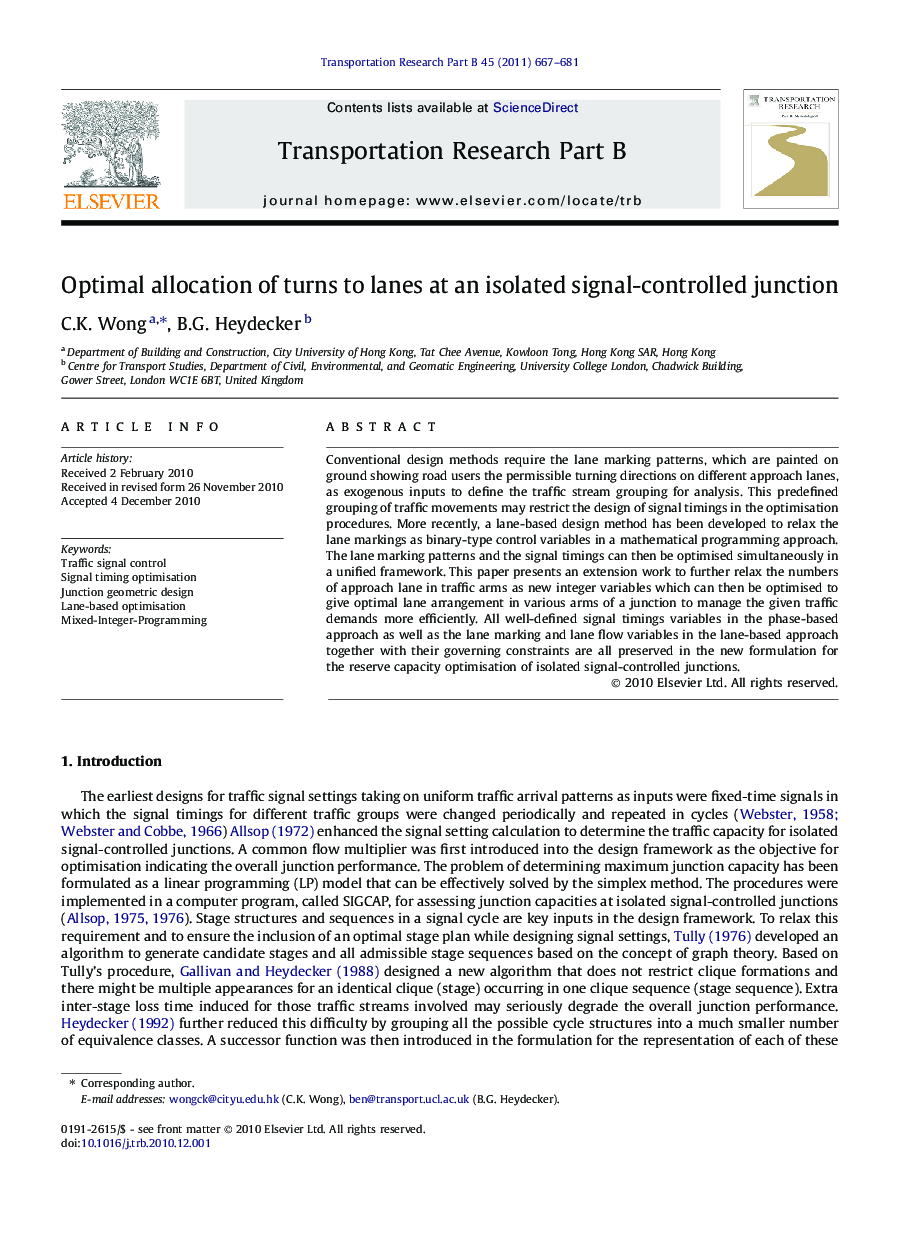| Article ID | Journal | Published Year | Pages | File Type |
|---|---|---|---|---|
| 1132663 | Transportation Research Part B: Methodological | 2011 | 15 Pages |
Conventional design methods require the lane marking patterns, which are painted on ground showing road users the permissible turning directions on different approach lanes, as exogenous inputs to define the traffic stream grouping for analysis. This predefined grouping of traffic movements may restrict the design of signal timings in the optimisation procedures. More recently, a lane-based design method has been developed to relax the lane markings as binary-type control variables in a mathematical programming approach. The lane marking patterns and the signal timings can then be optimised simultaneously in a unified framework. This paper presents an extension work to further relax the numbers of approach lane in traffic arms as new integer variables which can then be optimised to give optimal lane arrangement in various arms of a junction to manage the given traffic demands more efficiently. All well-defined signal timings variables in the phase-based approach as well as the lane marking and lane flow variables in the lane-based approach together with their governing constraints are all preserved in the new formulation for the reserve capacity optimisation of isolated signal-controlled junctions.
Research highlights► Lane marking designs with optimised usages of traffic lanes to serve approaching or leaving traffic is achieved. ► The overall junction capacity has been improved with better lane usages. ► Asymmetrical and complex lane marking patterns can be obtained to fit in different junction geometries.
